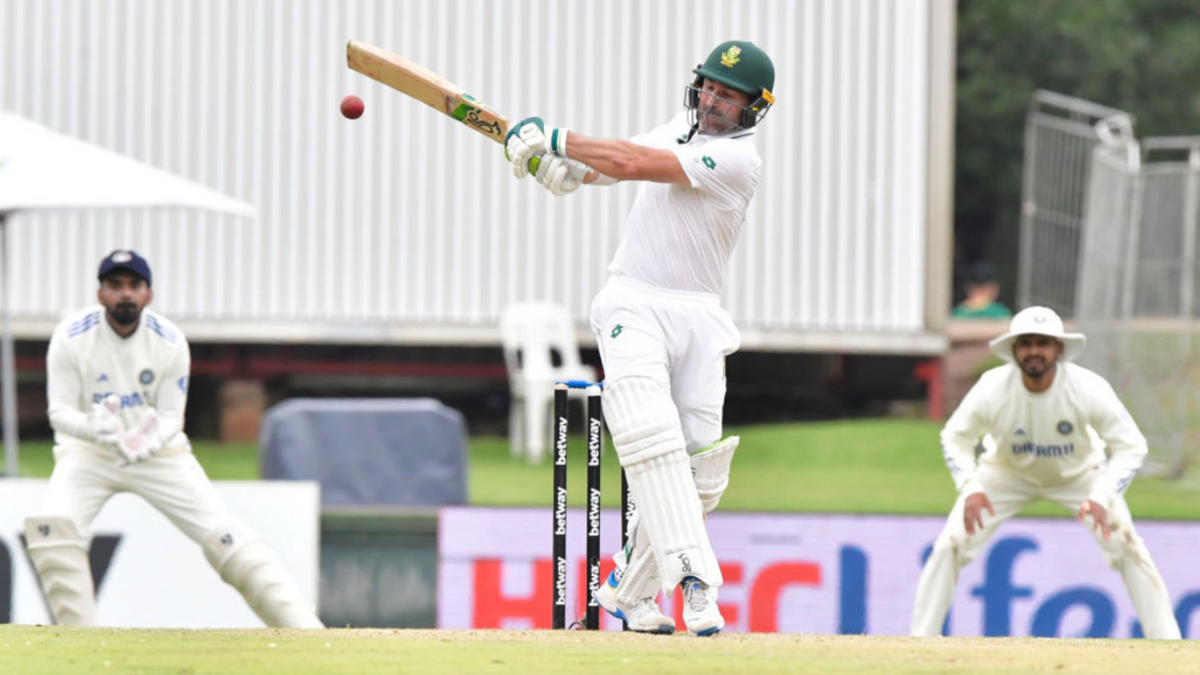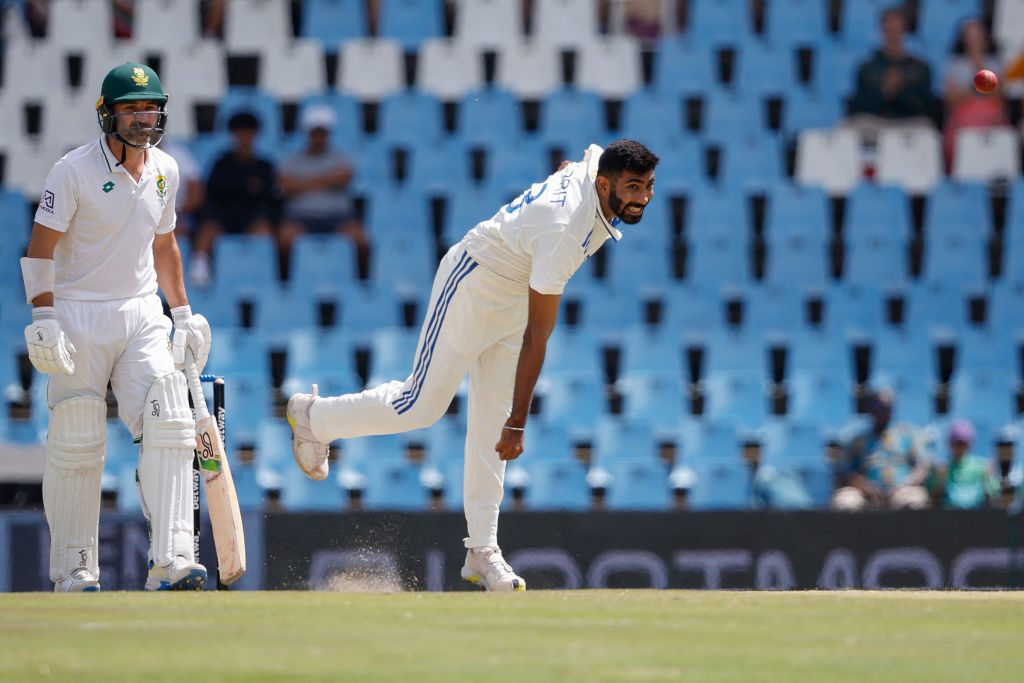
Dean Elgar has an admitted chink in his armour against the short ball, and India failed to exploit it, writes Naman Agarwal.
Subscribe to the Wisden Cricket YouTube channel for post-match analysis, player interviews, and much more.
“There’s so much footage available these days, you can definitely make plans and strategies on where to bowl to whom. Or even if you just look at their dismissals in the last 5-6 Tests, you get some sort of a trend and idea on where you have to bowl to which batter,” said Sanjay Bangar, India’s former batting coach on air towards the end of South Africa’s first innings in Centurion.
He was, of course, referring to Dean Elgar and India’s bowling plans against him in the first innings. Playing in what is going to be his last international series, Elgar saved one of his best for the last, scoring a mammoth 185 on a surface where that looked like a decent team score on the first morning of the Test.
Not known to be a conventionally pretty left-hander to watch (yes, such a group exists), Elgar drove and flicked with authority, sending the inaccurate Indian bowlers on a leather hunt quite like KL Rahul had sent the South African bowlers on in the first innings, just longer and more stretched out.
Elgar was a thorn in India’s side the last time they toured South Africa too, leading them to a series victory with the bat. India’s bowling tactics to him were questioned then as well, as he hung back and waited for the bowlers to bowl at his strengths, which they readily did. Unlike last time though, Elgar had a clear pattern of dismissals coming into this series.
In the 2022/23 Australia tour, the southpaw managed just 56 runs from six innings, getting out to short deliveries between hip and head height, angling down the leg side, on four of those occasions.
Four times in six innings – Dean Elgar's near identical dismissals this series #AUSvSA pic.twitter.com/uUaJjg4V4K
— 7Cricket (@7Cricket) January 8, 2023
Elgar admitted after the series that this was a ‘new’ chink in his armour, and that the mode of dismissal frustrated him. “I’ll accept maybe once, maybe twice, but the third time is something that highly irritates me,” Elgar had said back then. “Generally you have a way of going out and that’s what bowlers target at. But this is obviously something new and ten years into a Test career, this is obviously foreign territory for me.”
Since that series, Elgar played two Tests against the West Indies, where he scored one fifty and two single-digit scores. Two of his dismissals in that series came off short balls as well.
This is the trend of dismissals that Bangar was talking about in commentary. A trend that was so obvious that it’s hard to imagine the Indian think-tank having missed out on it in their pre-game analysis. Yet, somehow, the lack of emphasis in that area of Elgar’s body by the Indian bowlers in the first innings, gives the indication that they might have.
The first real attempted bouncer to Elgar came in the 15th over of South Africa’s innings, and understandably so; the new ball was doing enough for Jasprit Bumrah and Mohammed Siraj to pitch it up and look to bring the slip cordon into play. And when it did, Elgar crunched it for a pull in front of square.
A short ball problem does not mean that a batter will hand their wicket away on a platter every time a bowler bangs the ball halfway into the pitch. At the international level, margins are fine and the cost of erring is high. Elgar’s issues over the last year have been with short balls aimed at the body, or even sliding just down the leg side, not with balls angled across him, which is what Prasidh Krishna’s attempted bouncer in the 15th over was. It allowed Elgar to free his arms and dispatch it disdainfully from his presence.
The authority with which Elgar played the pull might have played a part in India’s lack of employment of the short ball tactic. Krishna, who is the tallest member of the fast-bowling attack, and bowls a naturally shortish length, tried the occasional bumper, but wasn’t able to tuck Elgar up. Whenever he did, Elgar showed visible signs of trouble.
The other Indian quick who attempted the most short balls at Elgar was Shardul Thakur. However, he wasn’t consistent at aiming his body either, and just like Krishna, whenever he found the right lines, Elgar didn’t look convincing. Eventually, it was an attempted bouncer down the leg side that ended his marathon knock as he gloved a pull off Thakur to KL Rahul behind the stumps.
 Jasprit Bumrah, India’s sharpest fast bowler, surprisingly refrained from aiming at Dean Elgar’s body during the latter’s marathon knock in Centurion.
Jasprit Bumrah, India’s sharpest fast bowler, surprisingly refrained from aiming at Dean Elgar’s body during the latter’s marathon knock in Centurion.
By the time Elgar got out, he had scored 185 invaluable runs and had taken South Africa’s lead to a daunting 115. Only two South Africa players have scored more runs in a Test innings against India at home: Jacques Kallis (201* in Centurion, 2010), and Herschelle Gibbs (196 in Gqeberha, 2001).
It begs the question then, why did India not use the short ball and use it properly more often? This has actually been a recurring question among Indian fans throughout the year. Unfortunately, there are no answers for it yet, but there have been catastrophic consequences.
In the 2023 World Test Championship final against Australia, Travis Head took the game away from India, scoring 163 off 174 balls in the first innings. Head had (and still does) a well-documented weakness against short bowling. Yet, India were found wanting as they strangely refrained from bowling at his body. By the time they did, Head had crossed a hundred and the killer blow had been landed. The story wasn’t much different in the World Cup final either, with the same batter snatching away another ICC tournament final as India failed to hit where it should, theoretically, have hurt him the most.
Perhaps it is because of the personnel India have at their disposal. The lack of height and the extra yard of pace among the Indian seamers might be forcing their hands to not consistently dig it in short. Perhaps it might just be a lack of intel, as unlikely as it sounds. Or perhaps it might be something else entirely. Whatever it is, at this level, margins are fine and cost of erring is high. And India’s inexplicable reluctance to bowl short at another left-handed batter has cost them another important game of cricket in 2023.








